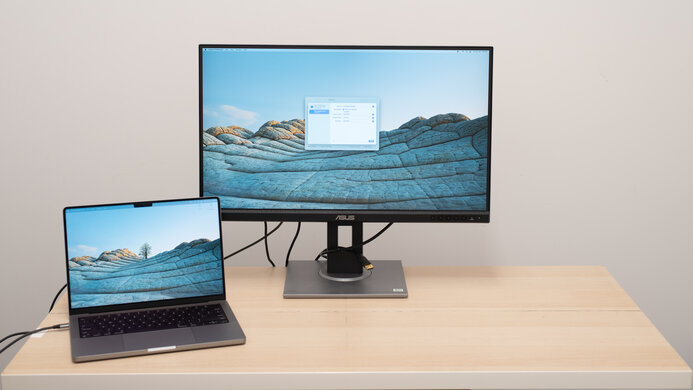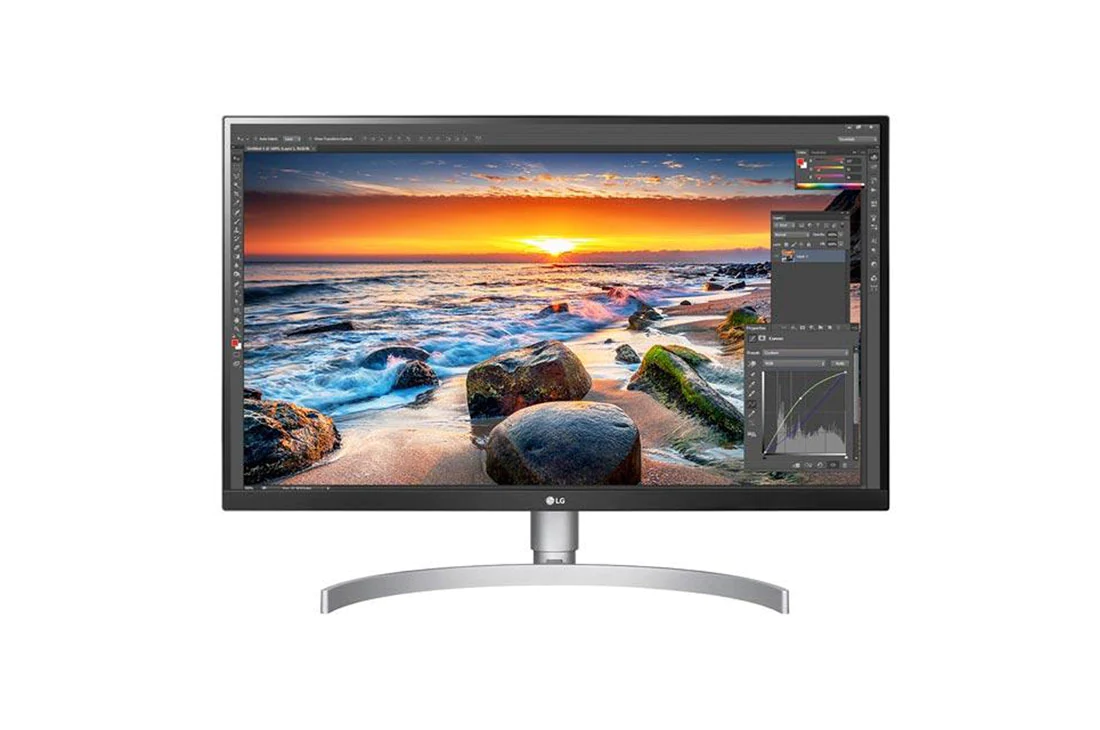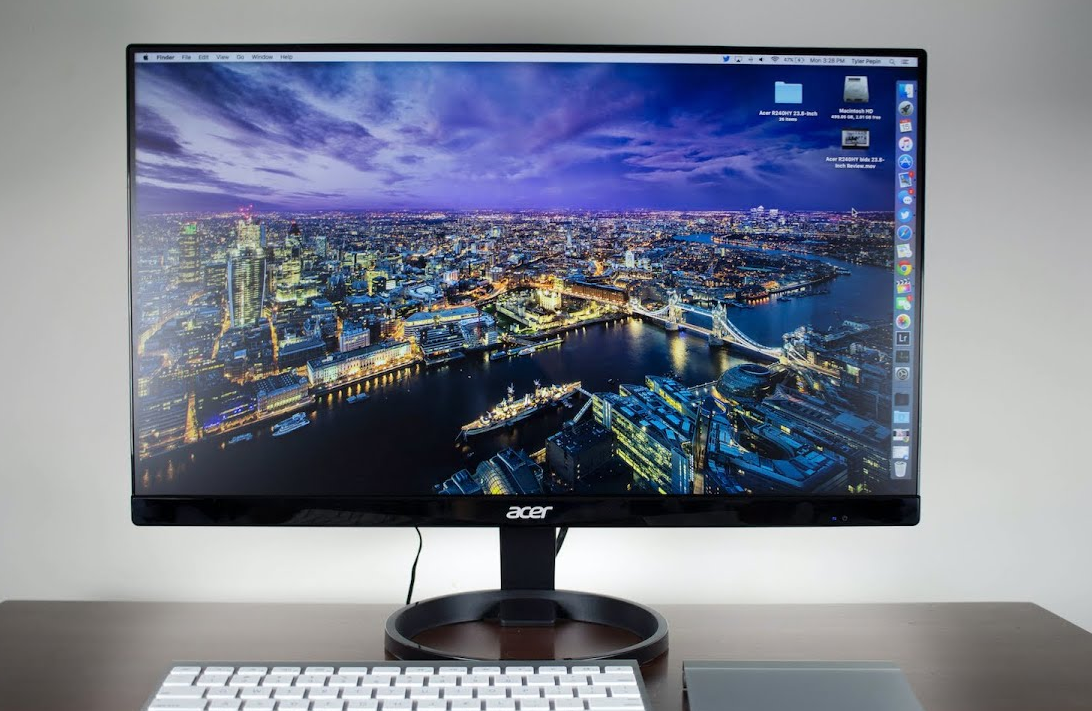Top 5 Best Monitor for Video Editing this 2023
Jul 09, 2023
Are you looking for the perfect monitor to make your video editing skills maximize to its full potential? Remember, your monitor isn't just a screen; it's the canvas on which your creative visions come to life. In the realm of video editing, the quality of your monitor can be the game changer, transforming an ordinary editing experience into a vivid journey of creativity.
But with so many choices out there, how do you pick the best one? That's where we can help! This guide is your easy-to-follow map. It will help you navigate through the maze of options and find the perfect monitor for your needs and budget. Ready to start this exciting journey to boost your video editing skills? Let's go!
BEST DEALS 2023
Dell UltraSharp U2720Q
ASUS ProArt Display PA278QV
LG 27UK850-W
Acer R240HY bidx
Philips 276E8VJSB
Factors to Consider in a Video Editing Monitor
Choosing the perfect monitor for your video editing needs can feel like a tricky task. There are so many tech terms and specs to understand. But don't worry! We'll break it all down for you.By understanding these key factors, you'll be ready to pick a monitor that's just right for you. So, let's check it out!
Display Resolution
One of the first things to consider is the monitor's resolution. Common resolutions you will come across are Full HD (1920 x 1080 pixels), 4K (3840 x 2160 pixels), and 8K (7680 x 4320 pixels). The higher the resolution, the more pixels there are, and hence, more detail can be displayed. For video editing, a higher resolution is typically preferred because it allows you to see your footage in much finer detail. This is particularly important when editing high-resolution videos, as it allows you to edit at a 1:1 pixel ratio, providing the most precise view of your work.
Color Accuracy and Gamut
The ability of a monitor to represent colors accurately is critical in video editing. This ensures that what you see on your screen is what your viewers will see on their devices. This leads us to the consideration of color gamuts. Different monitors will cover different ranges of color - the most common of which are sRGB and Adobe RGB, with the latter offering a wider color range. Some high-end monitors even cover the DCI-P3 color space used in cinema. If you're doing professional work or work that will be shown in various mediums, a monitor with wide color gamut capabilities is recommended.
Panel Type
The type of panel a monitor uses will significantly affect its performance characteristics. The main types of panels you'll encounter are IPS (In-Plane Switching), TN (Twisted Nematic), and VA (Vertical Alignment). IPS panels are generally favored for video editing due to their superior color accuracy and viewing angles compared to TN and VA panels. TN panels, while having the fastest response times, lag behind in color performance and viewing angles. VA panels offer a middle ground between IPS and TN panels.
Contrast Ratio and Brightness
The contrast ratio of a monitor describes its ability to differentiate between the darkest black and the brightest white it can display. A higher contrast ratio enables a monitor to distinguish more shades between dark and light, resulting in images with more depth and realism. For brightness, a monitor with around 250 to 350 cd/m² is usually enough for video editing in a typical lighting environment. However, if you're working in a brightly lit space, you might need a monitor with a higher brightness.
Remember, the best monitor for you will depend on your specific video editing needs, preferences, and budget. Use these factors as a guide to help you make an informed choice.
Now let’s get into these best monitors for video editing:
Top Recommendations: Best Monitors for Video Editing
1. Dell UltraSharp U2720Q

(Image credits: RTINGS.com)
Rating 4.5 out of 5 stars
Key features High resolution, 99% sRGB color coverage, USB-C port with power delivery, adjustable stand
SPECIFICATIONS |
|
PROS |
|
CONS |
|
Trying Dell UltraSharp U2720Q, I knew I was in for a treat. The sleek design and solid build quality were immediately evident. But it's not just about the looks; this monitor packs a punch in terms of performance too.
Turning it on, the first thing that grabbed my attention was the impressive 4K resolution. The picture quality is simply stunning. It allows me to see every little detail of my videos. This makes tasks like color grading and detailed editing so much easier and more precise.
As a video editor, color accuracy is vital to us, and the Dell UltraSharp U2720Q doesn't disappoint. It covers 99% of the sRGB color spectrum, ensuring that the colors I see on the screen are as close to real life as possible. This is particularly important when I am color-grading my videos, as it gives me the confidence that my viewers will see the colors just as I intended.
The monitor uses an IPS panel, which I have found to be superior to TN and VA panels for video editing. The colors remain consistent when viewed from different angles, and the color reproduction is much more accurate. This means I can move around my desk and not worry about color shifts affecting my work.
Another feature that stood out to me is the monitor's high contrast ratio. It's able to display deep blacks and bright whites, making my videos appear more dynamic and lifelike. The monitor is also bright enough for my needs, even in well-lit environments.
The Dell UltraSharp U2720Q also scores points for its connectivity options. It has a built-in USB-C port that delivers power, data, and video signals. This is a game-changer for me as it allows me to connect my laptop with a single cable, reducing desk clutter.
Overall, my experience with the Dell UltraSharp U2720Q has been nothing short of excellent. It offers the perfect blend of aesthetics and performance for video editing. It's a bit of an investment, sure, but given the features and quality, I believe it's worth every penny.
2. ASUS ProArt Display PA278QV

(Image credits: RTINGS.com)
Rating 4.6 out of 5 stars
Key features 100% sRGB and 100% Rec. 709 color gamut coverage, ergonomic stand, factory-calibrated color accuracy
SPECIFICATIONS |
|
PROS |
|
CONS |
|
With a subtle, understated design, I could tell ASUS ProArt Display PA278QV fit perfectly in my workspace. However, it was the technical specifications that truly got me excited.
The ProArt Display PA278QV boasts a 2K WQHD (2560 x 1440) resolution. Although it doesn't reach the ultra-crisp detail of a 4K monitor, it offers a more than satisfactory level of detail for most of my video editing needs. Moreover, the lower resolution translates to less strain on my computer hardware, allowing for a smoother editing experience.
Color accuracy is a critical factor for me as a video editor, and the PA278QV excels in this area. It's pre-calibrated from the factory to ensure accurate color reproduction and covers 100% of the sRGB color gamut. This ensures that the colors I see during editing are the colors that will be output in the final product. It provides me with the confidence I need to make critical color grading decisions.
ASUS has opted for an IPS panel in this monitor, a choice I can certainly appreciate. This panel type offers excellent color consistency and viewing angles, essential factors for any serious video editing work.
One feature of the PA278QV that caught my attention is its impressive contrast ratio and brightness level. It provides excellent clarity between different shades, giving my work a sense of depth and dimension. Working in different lighting conditions isn't a problem either, thanks to its adaptable brightness level.
When it comes to connectivity, the ProArt Display PA278QV offers a generous selection of ports, including HDMI, DisplayPort, and even built-in speakers. Though it doesn't include a USB-C port, its range of options keeps it versatile for different setups.
For us, the ASUS ProArt Display PA278QV is an excellent choice for video editors. It blends high performance with affordability, making it an attractive option for those looking to balance cost and quality. I'm thoroughly pleased with my experience with this monitor, and I wouldn't hesitate to recommend it to fellow video editing enthusiasts.
3. LG 27UK850-W

(Image credits: LG)
Rating 4.5 out of 5 stars
Key features AMD FreeSync technology, USB Type-C connectivity, 99% sRGB color coverage
SPECIFICATIONS |
|
PROS |
|
CONS |
|
This product has an elegant and modern design. With its slim bezel and adjustable stand, it exudes a premium feel that adds a touch of sophistication to my workspace. But as I soon found out, the 27UK850-W offers more than just good looks.
Equipped with a 4K UHD (3840 x 2160) resolution, the 27UK850-W presents a highly detailed image that enhances my video editing experience. The extra detail offered by 4K resolution gives me the ability to make precise adjustments and scrutinize my work closely. Whether I'm trimming frames or color grading, the extra clarity truly makes a difference.
As for color accuracy, the 27UK850-W is impressive. It covers 99% of the sRGB color spectrum, ensuring that the colors I'm seeing are accurate and true to life. As a video editor, I find this incredibly important, as it allows me to make informed decisions about color correction and grading.
The LG 27UK850-W employs an IPS panel, which is ideal for video editing. IPS panels offer superior color reproduction and wider viewing angles compared to other panel types. No matter from which angle I view the monitor, the colors remain consistent, which is essential for my workflow.
The contrast ratio on this monitor is great as well. It excellently handles dark and light areas in my footage, helping me achieve balanced lighting and color in my final product. The brightness level is also sufficient for my workspace, performing well under various lighting conditions.
The connectivity options are a highlight for the LG 27UK850-W. It includes a USB-C port that delivers video and data, and it also charges my laptop. It's incredibly convenient, reducing the clutter of cables on my desk. The inclusion of standard HDMI and DisplayPort inputs adds to its versatility.
All in all, the LG 27UK850-W has been a delightful addition to my video editing setup. It combines high-resolution display, accurate color representation, and versatile connectivity into a sleek package. Despite being a tad pricier than some alternatives, its performance and feature set justify the investment for those serious about their video editing work.
Budget-Friendly Options
Premium performance doesn't always have to come with a premium price tag. Now let me give you some budget-friendly options that don't skimp on quality. These monitors offer fantastic value for money, delivering great performance at a fraction of the cost.
4. Acer R240HY bidx

(Image credits: TbonesTech on Youtube)
Rating 4.4 out of 5 stars
Key features Zero-frame design, energy-saving, 178-degree viewing angle
SPECIFICATIONS |
|
PROS |
|
CONS |
|
Acer R240HY bidx is pleasantly surprising by its performance, especially considering its budget-friendly price tag. It has a sleek, minimalistic design that is appealing and doesn't take up much space on my desk, leaving me room for other important tools.
The Acer R240HY bidx sports a Full HD (1920 x 1080) resolution, which, while not as high as 4K or 2K, is more than adequate for beginner to intermediate level video editing tasks.
When it comes to color accuracy, the R240HY bidx does a commendable job. While it might not cover as broad a color spectrum as more premium models, it provides reasonably accurate color reproduction, which is crucial when I'm working on color grading in my videos.
The monitor uses an IPS panel, a feature I was thrilled to find in this price range. It also offers a respectable contrast ratio and brightness level, providing a good balance between the dark and light areas of my footage. While it might not stand up to more expensive models in extremely high or low light situations, it performs admirably under normal lighting conditions.
In terms of connectivity, the Acer R240HY bidx offers HDMI, DVI, and VGA ports. Although it lacks the modern USB-C option, the available ports provide a solid range of connectivity that can cater to various setups.
Experience with the Acer R240HY bidx has been a positive one. For those just stepping into the realm of video editing or working within a budget, this monitor offers an excellent balance of performance and affordability. It's proof that you don't have to spend a fortune to get a capable video editing monitor.
5. Philips 276E8VJSB

(Image credits: Pichau)
Rating 4.3 out of 5 stars
Key features Narrow border display for seamless appearance, MultiView enables active dual connect and view
SPECIFICATIONS |
|
PROS |
|
CONS |
|
In terms of design, It has a thin bezel, which maximizes screen real estate, and a solid stand that gives it a sturdy feel. For a budget-friendly monitor, it certainly doesn't compromise on aesthetics.
The 276E8VJSB stands out from the crowd of budget monitors by offering a 4K UHD (3840 x 2160) resolution. Color accuracy is crucial in video editing, and the 276E8VJSB does a commendable job in this aspect. While it may not match the accuracy of more expensive monitors, it's impressive for its price.
Equipped with an IPS panel. Its brightness level is also adequate for most working environments, ensuring that I can see my work clearly, regardless of the ambient light.
In terms of connectivity, the Philips 276E8VJSB includes HDMI and DisplayPort options, catering to most video output needs.
Despite its budget-friendly price tag, it offers features and performance usually reserved for more expensive models. If you're looking for a cost-effective monitor that doesn't compromise on quality, this is one you should definitely consider.
Frequently Asked Questions
Does Monitor Size Matter for Video Editing?
Absolutely, the size of a monitor can significantly impact the quality of your video editing experience. Larger monitors, typically those above 27 inches, provide an extensive workspace, which allows you to keep multiple windows or panels open simultaneously. This can enhance your productivity by reducing the need to constantly switch between tools and timelines, allowing you to focus more on the creative process.
Moreover, a larger screen can give you a more detailed view of your footage, making it easier to work on fine details without constantly zooming in and out. This is particularly beneficial when editing high-resolution videos where pinpoint accuracy is crucial.
However, it's important to note that the advantages of a larger screen are closely tied to the monitor's resolution. Resolution refers to the number of pixels a monitor can display and determines the sharpness and clarity of the image. While a larger monitor can offer a more immersive viewing experience, if the resolution is too low, the image can become pixelated or blurry.
For instance, a 32-inch monitor without a high enough resolution (at least 2560 x 1440 pixels for 2K or 3840 x 2160 pixels for 4K) might not display images as sharp and crisp as a smaller monitor with a higher pixel density.
So, while size is definitely a factor to consider when choosing a monitor for video editing, it should not be evaluated in isolation. You need to consider the monitor size in conjunction with its resolution to ensure you're choosing the most suitable monitor for your video editing needs.
Finally, you should also consider your workspace. A larger monitor requires more desk space and may require you to sit further back to take in the entire screen. Thus, ensure your work environment can accommodate the size of the monitor you're considering.
In conclusion, while the size of the monitor is an important factor in video editing, it should be balanced with resolution, your specific editing needs, and the space you have available.
How Does a Monitor's Refresh Rate Affect Video Editing?
The refresh rate of a monitor, measured in hertz (Hz), indicates how many times the screen can update with new images each second. High refresh rates like 120Hz or 144Hz are often associated with gaming, where they can result in smoother, more responsive gameplay. But how does this impact video editing?
While higher refresh rates can potentially offer a smoother viewing experience, they don't necessarily enhance the video editing process in the same way they improve gaming. Most video content is produced at 24, 30, or 60 frames per second (fps). Therefore, a standard 60Hz monitor, which refreshes the screen 60 times per second, can display frames up to 60 fps without any loss of motion clarity.
However, if you're editing high-frame-rate footage or applying real-time effects and transitions, a monitor with a higher refresh rate can provide a more fluid visualization of your work. This is because it can display more frames per second, reducing motion blur and making movements appear more natural.
It's important to note, though, that for many editors, factors like resolution, color accuracy, contrast ratio, and color gamut coverage are significantly more critical for video editing than the monitor's refresh rate. While a high refresh rate isn't harmful, and can indeed provide a smoother on-screen experience, it might not necessarily improve your editing efficiency or the quality of your work.
Therefore, while considering the monitor's refresh rate, remember that it's one of many aspects to weigh when choosing a monitor for video editing. A standard 60Hz monitor can certainly suffice for most video editing tasks, especially when balanced with other important monitor features.


